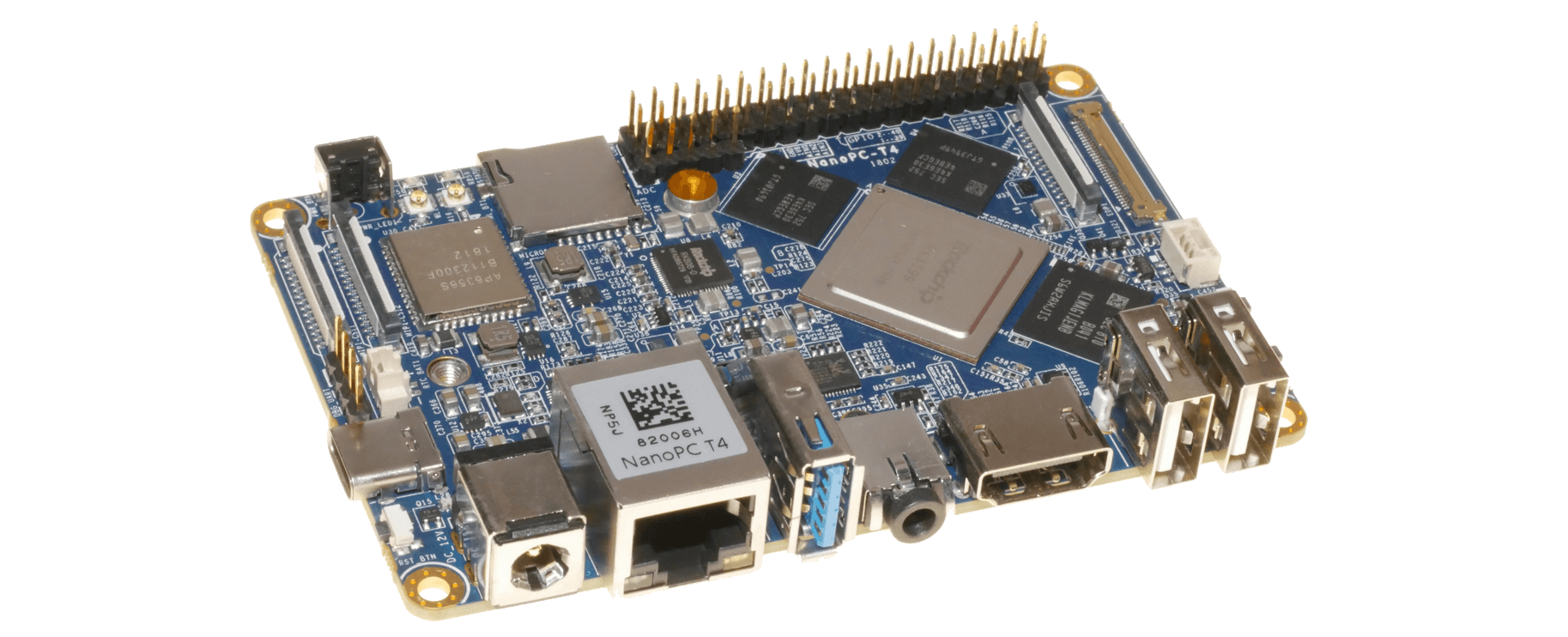This document on how I configure NixOS on NanoPC-T4 and contains my original collection of notes and links when researching how to do this.
To install NixOS on you can follow the official instructions by downloading the pre-built images. You can also build the U-Boot image yourself from nixpkgs based on changes added in #111034.
The basic configuration should look something like this:
{
# Disable Grub in favor of ExtLinux
boot.loader.grub.enable = false;
# Enables the generation of /boot/extlinux/extlinux.conf
boot.loader.generic-extlinux-compatible.enable = true;
# Enable additional firmware (such as Wi-Fi drivers).
hardware.enableRedistributableFirmware = true;
}To make the NVMe SSD be detected at boot compile Rockchip modules directly into the kernel:
{
boot.kernelPatches = [{
name = "pcie-rockchip-config.patch";
patch = null;
extraConfig = ''
PHY_ROCKCHIP_PCIE y
PCIE_ROCKCHIP_HOST y
'';
}];
}For more details see the PCI NVMe document.
My solution was to migrate the OS from the eMMC storage to the NVMe.
I create the ZFS pool and three filesystems on the SSD:
zpool create -O xattr=sa -O acltype=posixacl -O mountpoint=none rpool /dev/nvme0n1
for vol in nix root home; do
zfs create -o mountpoint=legacy rpool/$VOL
mkdir /mnt/$VOL
mount.zfs rpool/$VOL /mnt/$VOL
done
rsync -rax /. /mnt/root
rsync -rax /nix/. /mnt/nix
rsync -rax /home/. /mnt/home
rsync -rax /boot/. /And I create a configuration that looks something like this:
{
fileSystems."/boot" = { device = "/dev/disk/by-uuid/1234-5678"; fsType = "ext4"; };
fileSystems."/" = { device = "rpool/root"; fsType = "zfs"; };
fileSystems."/nix" = { device = "rpool/nix"; fsType = "zfs"; };
fileSystems."/home" = { device = "rpool/home"; fsType = "zfs"; };
}
And rebuild he system:
sudo nixos-rebuild bootAfter that it's necessary to run all the four rsync commands again to sync filesystems.
Once everything is synced you can finally reboot.
